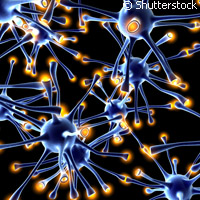EU-funded scientists mapping brain atlas
Experts studying the human brain have made great strides in improving our understanding of how it functions, thanks in part to neuroimaging methods that have emerged since the 1990s. Characterisation of its structure and connections could provide even greater insight in how our brains connect, however. Enter an EU-funded team of researchers who are working to create atlases of the brain's connectivity at various stages of life. These atlases will be used as a reference by those active in the neuroscience and medical fields. In particular, they would help researchers unlock the mysteries of various brain disorders including schizophrenia and autism. Scientists believe developmental disorders such as autism are a function of abnormal connections between the brain's different regions. Launched in 2009, the CONNECT ('Consortium of neuroimagers for the noninvasive exploration of brain connectivity and tractography') project is backed with EUR 2.4 million under the 'Information and communication technologies' (ICT) Theme of the EU's Seventh Framework Programme (FP7). The CONNECT consortium, led by Tel Aviv University (TAU) in Israel, is using diffusion magnetic resonance imaging (MRI) to map the connections and microstructure of the human brain. The researchers are building on a tool co-developed by TAU's Dr Yaniv Assaf. 'It's currently impossible for clinicians to "see" subtle disorders in the brain that might cause a life-threatening, devastating disability,' explained Dr Assaf, whose work focuses on clusters of brain writing, or axons, thus providing the support scientists need to create an enhanced working map of the brain for future research. Brain cells are connected by axons, whose diameter is around one micron (one millionth of a metre). Axons have the capacity to transfer information to different parts of the brain. What has been missing in this field of research is a non-invasive imaging technique that could permit scientists to 'see' such features in the brain. Dubbed 'AxCaliber', the tool developed by Dr Assaf enables the recognition of groups of abnormal axon clusters. According to Dr Assaf, these groups could serve as biomarkers for the early diagnosis, treatment and monitoring of brain disorders. 'Currently, we can map the healthy human brain past the age of puberty,' Dr Assaf said. 'But once we will assemble this atlas, we could do this scan before puberty - and maybe even in utero - to determine who's at risk for disorders like schizophrenia, so that an early intervention therapy can be applied.' Ultimately, the CONNECT partners will help foster more effective treatments of brain-related diseases, and enable diagnosticians to better predict the onset of such diseases. CONNECT brings together key experts from Denmark, France, Germany, Israel, Italy, Switzerland and the UK. The project is scheduled to end in 2011.
Countries
Switzerland, Germany, Denmark, France, Israel, Italy, United Kingdom



